Simplicity Coimbatore, Lakadong turmeric – a unique variety </a
Last year, a friend from Europe, asked me to bring her some curcumin from India. I was surprised to learn that the name for turmeric in German was the name of the chemical found in turmeric plants ! Curcumin is the chemical compound found in curcuma longa (turmeric plants)
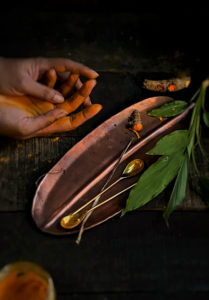
After reading up on the dangers of spurious turmeric, she was sure that the best unadulterated turmeric powder would be available from local sources in Coimbatore.
Turmeric is a crop which grows easily in South India. Turmeric fields in Coimbatore and its outskirts are easily identifiable by the vibrant green hue with a yellow undertone of the beautiful long leaves. The bulbs are harvested and boiled before being left to dry. The dried turmeric is then powdered.
Recent stories of farmers adding colour to the water when boiling the turmeric rhizomes was most distressing to hear. Apparently this is the result of consumers demanding bright yellow turmeric powder rather than the more natural mustard yellow.
Since the request was for organic turmeric powder,it seemed a good opportunity to do a bit of hunting about for turmeric powder from various sources.
Imagine my surprise when I located ,on a shelf, tucked far away the casual glance, a few packets of Lakadong turmeric powder. The Orga Store in Race Course was selling this special turmeric powder. I had heard of this particular turmeric which was cultivated in the North East but I had never used it in my cooking. The brand which sold this powder was also a North Eastern brand which mentioned a farm to customer connect on the packaging.
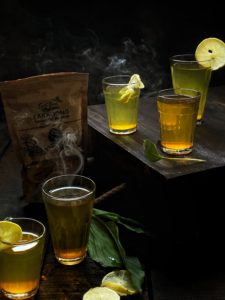
The colour of the turmeric powder was visible through the small transparent part of the packet. It was a deep mustard almost leaning towards an orange shade. Intrigued, I bought some to try at home. The packet sat unopened until March this year when we had begun the precautionary hot water and turmeric infusions. The Lakadong turmeric seemed ideal for this immunity boosting therapy. Let me explain why.
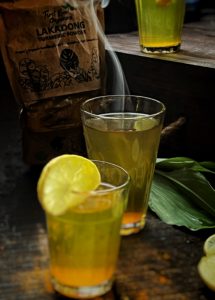
Apparently there are 133 varieties of turmeric in India. But there is one kind which grows only in the tiny Lakadong village and the areas surrounding it ,in the Jaintia hills district of Meghalaya. Hence the name Lakadong turmeric.
The soil,in those villages, is said to be of a very dark colour and of an airy texture, best suited to grow this variety of turmeric. The area receives adequate rainfall and the plants thrive best in that environment. This is another reason why Lakadong turmeric is cultivated in an organic manner. There is no need to resort to chemical farming. The Lakadong turmeric has been proven to contain 6-7 % of curcumin as against other turmeric varieties which go up to a maximum of 3-4%. The uniqueness of the Lakadong turmeric is such that if the same rhizomes were planted anywhere else in the country, the curcumin percentage would decline drastically. Only when grown in that particular region of the North East does the Lakadong turmeric achieve its full potency.
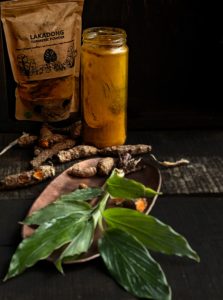
As mentioned in the Deccan Herald, “The Jaintia Hills (split into east and west) produce at least three turmeric varieties — Lachein, Lakadong and Ladaw, each with its distinct identity.” But it is the Lakadong which was found to have a better yield and higher quantity of curcumin. Turmeric production had declined when coal mining became more lucrative in this district. A ban brought about in 2014, on coal mining, saw farmers getting back into turmeric cultivation.
The Indian Council of Agricultural Research has published findings on the higher content of curcumin in the Lakadong turmeric. But because these rhizomes were more expensive, farmers were unable to afford the costs. Help came in the form of a school teacher by the name Trinity Saioo whose mother was also a turmeric farmer. She has empowered hundreds of women into earning a livelihood by cultivating this indigenous variety of turmeric.
She was awarded a certificate of excellence by the Union Ministry of Agriculture. Encouraged by this, the Ministry of Agriculture in Meghalaya has launched Mission Lakadong 2018-2023 where they aim at promoting the cultivation of this special variety of turmeric. Because turmeric can be consumed both in fresh as well as dried form, turmeric farming will provide the women with a steady income all year round.
Going back to the turmeric infusions…it is no small exaggeration when I say that I had never tasted such a strong turmeric flavour before. We have on several occasions grown turmeric at home and made our own powder. That’s as local as it can get. But I had never before tasted such a strong earthiness and sharpness as was evident in the Lakadong turmeric.
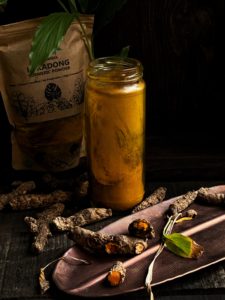
Over the past 8 months we have used this powder extensively in our cooking and also to make spice blends and pickles. It doesn’t give a highly saturated yellow colour to the dish but it does impart a more deep golden hue.
The Lakadong turmeric powder is easily available online. I do recommend that you buy from a website which specialises in North Eastern products. After all we do want that which is authentic. Do the right enquiries, check your sources and make an informed choice.
This is not to take away from the wonderful turmeric we get locally but why not also support our fellow Indians from the North East. The health benefits are an added advantage.


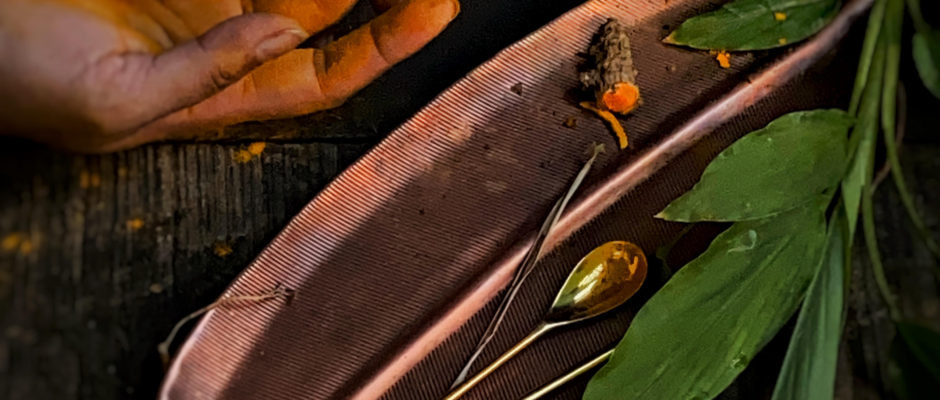
No comments yet.